#Māori wrasse
Explore tagged Tumblr posts
Text

TERFs can fucking die and go to hell mad about it!
Fuck them!
It’s not their future!
#personal stuff#dougie rambles#dougie makes a meme#Māori wrasse#Māori#wrasse#fish#marine biology#icthyology#trans#transgender#trans fish#fuck transphobes#fuck TERFs#political crap#apparently#anti fascist#leftism#lgbt#queer#aotearoa#new zealand#sweden#british library#sea life
1K notes
·
View notes
Note
Have you done Māori wrasse?
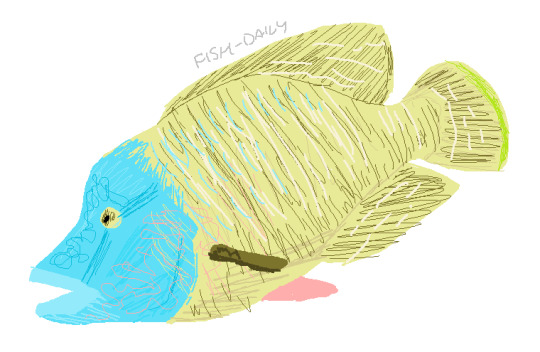
fish 85 - māori wrasse
55 notes
·
View notes
Text

2 notes
·
View notes
Text
This madness serves to prove that TERF thinking is not only rooted in pseudoscientific bullshit (like phrenology and eugenics), fascism and colonial supremacist thinking but also straight up anti-intellectual hysteria as well.
Denying reality and evidence that lies before them.
They’re a shower of book-burning bigoted swine wearing a feminist mask.
Typical bloody reactionaries denying reality!
Inside every little TERF is a fascist waiting to crawl out.
I wouldn’t put it past the morons to start calling for universities to be shut down/attacked and to demand attacks on intellectuals.
Heck I’m surprised they haven’t tried it already as far as I know.
Throw rocks at the fuckers!
And it rocks don’t work, throw bricks at them.
And if the bricks don’t do shit, use glass bottles instead.
And so on.
Their bullshit should not be accepted in the 21st fucking century!
Feel free to reblog this.
Also reblog Petrus Arctaedius and his trans fish to scare TERFs!
Apparently the fish in question is a Māori Wrasse.

Adding this for clarification.
Reblog the shit out of this fish to scare TERFs!
I think the trans community should adopt the fish as a kind of mascot. A symbol.
Maybe…

#dougie rambles#personal stuff#dougie reblogs#fuck TERFs#political crap#trans rights#fish#british library#madness#Petrus arctaedius#vent post#fuck’s sake!#reblog this#not my original post#trans fish#anti intellectualism#fuck reactionaries#māori#Māori wrasse#ichthyology#biology#marine biology#queer#lgbt#trans
28K notes
·
View notes
Text
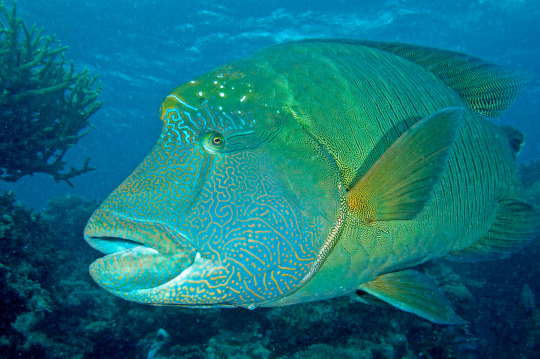
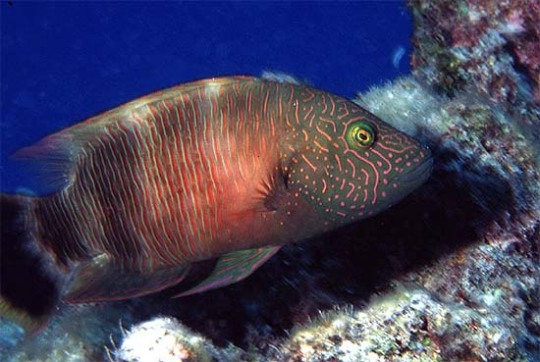
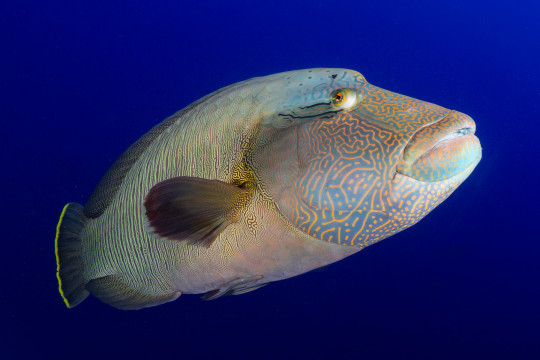
Let's Hear it for the Humphead Wrasse
The humphead wrasse, Cheilinus undulatus, is also known as the Māori wrasse, Napoleon wrasse, or the blue- tooth grouper. They can usually be found around coral reefs and steep rocky cliffs in the Indo-Pacific, particularly on the east coast of Africa, the west coast of India, and the tropical waters of southeast Asia and the Great Barrier Reef.
The Māori wrasse gets its name from the distinctive markings that adults carry. Males are blue-green or purple, while females are more often red or orange. Both have unique patterns of lines and dots covering their heads, and stripes running down the rest of their body; early researchers compared the patterns on their heads to the tattoos traditionally used by the Māori people. In addition to its striking coloration, C. undulatus is also known for being the largest member of the wrasse family. Males can reach up to 2 m (6.5 ft) long and weigh up to 180 kg (396 lbs), while females tend to be smaller. Males also have a large 'hump' on their foreheads, hence the name humphead wrasse.
Another feature of note in C. undulatus is the set of large teeth fused into a parrot-like beak. They use this beak to predate upon hard-shelled animals like mollusks, urchins, sea stars, and crustaceans. On occasion, they also feed on smaller fish and moray eels. Due to their size, adults have very few natural predators aside from sharks, but larvae and small juveniles are more often opportunistically hunted by other fish.
Like many coral reef fish, the humphead wrasse is a protogynous hermaphrodite. This means that most individuals begin life as a female, and become male later in life-- known as 'super males', they are larger than males who did not transition. Individuals first become sexually mature at 5-7 years old, and females begin transitioning to male at 9-12 years old. Spawning occurs a few times a year, and during this period over a hundred adults can congregate in an area. The female releases about 20 eggs into the water column, where they are fertilized by her chosen partner. Three to four weeks later, the eggs hatch and the larvae migrate to the nearby reef.
Conservation status: C. undulatus is considered Endangered by the IUCN. Populations have declined due to overfishing and by-catch mortalities, loss of their food sources, habitat destruction, and capture of juveniles for the aquarium trade.
If you send me proof that you’ve made a donation to UNRWA or another organization benefiting Palestinians– including esim donations– I’ll make art of any animal of your choosing.
Photos
Andrew J. Green
Lluís Masuet
George Ryschkewitsch
#humphead wrasse#Labriformes#Labridae#wrasses#ray-finned fish#bony fish#fish#marine fauna#marine fish#coral reefs#coral reef fish#indian ocean#Pacific Ocean#indo-pacific#animal facts#biology#zoology#ecology
109 notes
·
View notes
Text
Fish of the Day
Today's fish of the day is the Humphead Wrasse! Thank you Three for the suggestion!
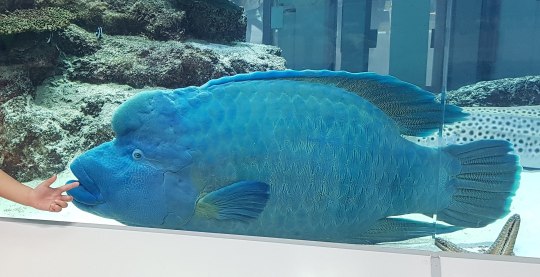
The humphead wrasse, also known as the Māori wrasse, Napoleon wrasse, and Napoleon fish, scientific name Cheilinus undulatus is an endangered fish found around coral reefs. Primarily found in the indo-Pacific ocean, their range stretches from the Eastern side of Africa to as far East as the islands of Oceania. Other populations live in lagoons, estuteries, and the red sea, thriving on the reefs within. Juveniles prefer to live on sandy banks, closer to the surface, but fully mature wrasse prefer to live a bit deeper in the waters. Anywhere from 3-350ft into the depth of the water, where offshore corals thrive.
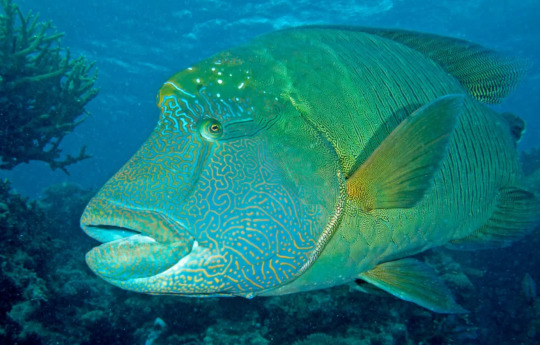
The diet of the humphead wrasse consists of mollusks, crustaceans, urchins, and smaller fish. But, the most impressive thing about their diet is the ability to eat toxic animals. More importantly, their ability to eat crown-of-thorns starfish, which are a common reason for disease in coral reef systems, as these starfish eat coral at a faster rate then they can grow in natural condition and the recent surge in population is one of the larger reasons for coral loss. The wrasse's ability to eat these is essential to their home ecosystem. Their diet can also support their large size, with females only getting as large as a meter, but males coming in as large as 2 meters (a little larger than 6 feet). Predated by sharks, but one of their main issues, and cause for endangerment is due to overfishing by humans, along with illegal aquarium trading. This combined with habitat loss is what makes it so important we watch their numbers closely.
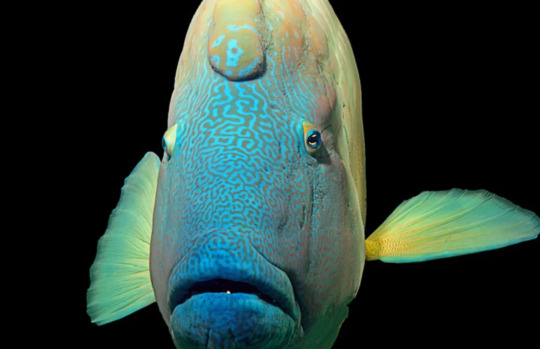
Reproduction of the humphead wrasse is much like that of others in the wrasse family. Wrasse are protogynous hermaphrodites, meaning that they can switch sexes throughout their lives, although the timing behind sex change is still unknown. All humphead wrasse are born female, and most switch to male at about 9 years old. Spawning will take place at reef edges, and eggs will rest on or near coral until hatching. The first 5-7 year of their lives juvenile, but after they will choose sex based on the population needs of their reef, and live another 30-40 years before dying.
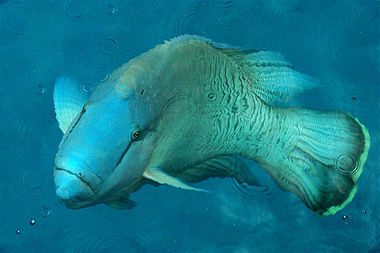
Have a wonderful day, everyone!
#fish#fish of the day#fishblr#fishposting#aquatic biology#marine biology#animal facts#animal#animals#fishes#informative#education#aquatic#aquatic life#nature#ocean#humphead wrasse#wrasse#Cheilinus undulatus#reef#coral reef#indo-pacific
17 notes
·
View notes
Text

By: Frederick R. Prete
Published: Feb 11, 2024
About the Author
Frederick Prete is a biopsychologist in the Dept. of Biology at Northeastern Illinois University. He teaches courses in neurobiology, and human and animal physiology. He has also served as an associate editor for the International Journal of Comparative Psychology. Prete writes about how people use and misuse biology to support their social and political points of view.
Other essays by Prete can be found on his Substack Everything Is Biology.
--
The contemporary “debate” (if one can call it that) surrounding the biology of sex suffers from a lack of intellectual seriousness on one side. The arguments forwarded by those insisting on the non-binary nature of sex often demonstrate a rudimentary understanding of basic biology, or are so comically nonsensical that one wonders whether they’re even worth responding to. Academic biologists engaging with gender activists’ arguments for the so-called “sex spectrum” are like mathematicians engaging with numerologists (individuals who believe in a mystical relationship between numbers and coinciding events) or geologists debating Flat Earthers. However, given that sex pseudoscience has somehow taken over academia, serious scholars now find themselves compelled to engage with the absurd.
One such example is the bizarre suggestion that because some fish can literally change sex during their lifetime, then perhaps humans can too. This idea, while absurd on its face, is far from fringe. It has been given credence by popular science outlets like Scientific American, which highlighted the sex-changing abilities of clown fish “to emphasize the diversity of ways in which sexual beings move through the world.” Even the United Kingdom’s national library posted (and later deleted) a thread on X during Pride Month last year about the sex-changing abilities of the Māori wrasse, and Greenpeace made a similar move in 2021.
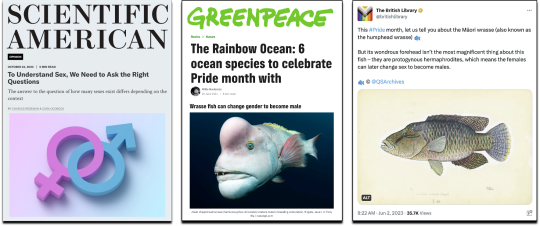
What relevance does LGBTQ+ Pride Month have to sex-changing fish unless there’s an intention to suggest that these examples illuminate the potential for sex changes in humans? But if activists insist on making such far-fetched comparisons, they should be challenged to follow their logic to its ultimate conclusion.
Let’s be honest, animals do a lot of weird things. They enslave other animals, eat their offspring, cannibalize their lovers, kill their newborn twin sisters, and devour their siblings in the womb. Do any of these activists want to justify slavery or embryonic cannibalism because animals do it? Probably not. But it’s equally silly to claim that we can derive grand lessons about human biology and sexual behavior from animals. Male octopuses, for instance, grab a packet of their own sperm with one of their tentacles, shove inside a female’s mantle cavity, and drop it next to her oviduct. This hardly seems like a behavior humans should try to emulate. Are there any objections? Why, then, would we think that fish sexual biology is a better model for us humans than that of octopuses?
What’s more, it frustrates me that those who continuously discuss sex changes in fish don’t get the fish-sex story straight in the first place. In reality, sex changes among the roughly 20 families and seven orders of teleost fish are driven by physiological and hormonal events that are triggered—depending on the species—by factors such as body size, perceived social status, or (in the monogamous clown fish Amphiprioninae) the disappearance of the large, breeding female. It’s also the case that those big, newly minted, dominant female clown fish are viciously aggressive to any fish they do not recognize as part of their group. So, if we’re taking our cues from clown fish, let’s not be hypocritical—let’s go all the way and demand that only extremely large, dominant, hyper-monogamous people who are particularly xenophobic should consider a sex change, and only after all the other females in the neighborhood have vanished. Does that sound reasonable? (I trust you realize I am being facetious here)
It should go without saying, but it appears that some still need a reminder: people are not fish. Fish live in the water. People live on land. When it comes to sex and reproduction, this makes all the difference in the world. In aquatic environments, you can simply release your gametes (eggs and sperm) into the water and let them drift around until they hook up. That’s because, in water, they won’t dry out and die. And neither will your embryos because they’ll be in the water, too. This is why so many fish can produce eggs or sperm at different times in their lives. It doesn’t take any specialized external organs to squirt gametes into the water, just a gonad for gamete production and an orifice for release.
However, the whole situation changes if you live on dry land. As mammals evolved for terrestrial life, they had to acquire adaptations—both structural and behavioral—to prevent their gametes and embryos from drying out. You can’t simply drop your sperms and eggs on the ground and hope for the best. So, male terrestrial animals evolved specialized external body parts for transferring sperm directly into females, who, in turn, have evolved body parts designed for receiving sperm and a chamber for nurturing the developing embryo until it is ready for life on dry land. Additionally—and equally important—both males and females evolved complementary neuromuscular behavioral patterns that allow them to court and mate successfully.
That’s why terrestrial mammals can’t change sex like some fish do. Such a transformation would require females to spontaneously sprout some kind of tube for internal sperm delivery, and males would need to somehow develop a complementary orifice. Moreover—and more importantly—both males and females would need to develop all the necessary internal parts and “plumbing” to make these external structures functional. It’s insufficient to merely alter the appearance of external structures, which can be done surgically (even on pets). A terrestrial animal transitioning from a female to a male would also require developing a complex duct system linking the gonads to the external tube, along with glands to secrete a carrying fluid and nutrients for the sperm (i.e., the Wolffian duct system, prostate, and bulbourethral glands). Going from male to female would involve developing some kind of organ to catch the eggs when they get released into the abdominal cavity, retain them until they encounter sperm, and then house the resulting embryo while it develops (these are derivatives of the Müllerian duct system).
Obviously, none of this could happen. When it comes to mammals, the die is cast prenatally. So, whatever fish do is their business and has absolutely nothing to do with terrestrial mammals. So, let’s drop the clown fish and Asian sheepshead wrasse analogies. Anybody who brings them up simply doesn’t understand evolutionary biology. It is futile to engage in discussions based on such analogies unless, of course, you’re one of those people who think that because some animals reproduce parthenogenically, humans should simply stop having sex altogether and hope for the best.
I want to make it clear that I have a deep understanding and empathy for those of us, including myself, who do not fit the popular stereotypes of any category or group. Throughout my life, I have received what seems to be an unrelenting stream of criticism for the fact that I was never (and still am not) perceived as representative of the norm (whatever that is). Consequently, I grew up defending those who were similarly targeted, and I believe that each of us should be continually mindful and accepting of the rich diversity of the human condition. Each of us should actively and consciously strive to be as compassionate, accepting, supportive, and inclusive as possible.
However, doing so does not require us to abandon reason, turn our backs on biology, or unhinge ourselves from reality.
#Frederick R. Prete#Frederick R Prete#people are not fish#sequential hermaphroditism#sex change#clownfish#human biology#human reproduction#evolutionary biology#reproduction#biology#biology lesson#gender ideology#queer theory#gender identity ideology#science#religion is a mental illness
15 notes
·
View notes
Text
I’m no expert but I do know that both transphobia and TERF thinking in general are inherently rooted in fascistic thinking, bioessentialist bullshit, pseudoscientific drivel and colonial supremacist thinking. Viewing anything not white, cis or heterosexual as some sort of animalistic “other” to be removed (which of course they aren’t).
Every single TERF is either a fascist or is on their way to becoming one. They start by fraternising with actual fascists.
I know this much.
TERF ideology also harms academic freedoms by its hostility towards research into the realm of gender and sex, especially in the biological, historical and social fields. (They bitched up a storm when the British library posted some facts about a fish that can change its gender (Māori wrasse)).
This fact makes it clear that just like other fascist movements, the TERF movement is inherently anti-intellectual.
Fuck TERFs!
It’s not THEIR future! Make damn sure they know that much!
Throw rocks at them. Don’t even entertain their bullshit for a laugh or for the sake of balance.
TERFs are fascists wearing a feminist mask.
They are not your friend!
Kick them out of society.
Feel free to reblog this.
Transphobia cannot be separated from fascism because it relies on white supremacist principles to function. There are two genders, male and female, each serving a singular biological purpose: the continuation of the race. Anything outside of that binary logic is broken or degenerate. And while not all transphobes might agree that this race must be white, it’s generally white beauty standards that transphobes choose to call upon when trying to determine what a woman is.
The rules prohibiting high levels of testosterone in sports are still more likely to eject black cis women than anybody else, while the assumption that ‘real women’ will always be shorter, smaller, and less hirsute than ‘women who actually men’ leads to the unfair and unnecessary scrutiny of (usually queer, non-white and/or disabled) women’s bodies, sometimes to the point of even the most slightly gender non-conforming cis women being attacked.
Maddison Stoff, Why gender essentialism is a white supremacist ideology
#lgbt#transgender#personal stuff#dougie rambles#vent post#political crap#fuck TERFs#anti fascism#anti fascist#fuck tories#fuck the gop#fuck brexit#trans rights#reblog this#please reblog this#somebody reblog this#signal boost#leftism#queer
5K notes
·
View notes
Text
6ft long 400 pound Māori Wrasse | source
2K notes
·
View notes
Text

An interesting perspective of the Humphead wrasse, with its thick lips on display.
The Humphead wrasse (Cheilinus undulatus), also known as Napoleon or Māori wrasse, is a large coral reef fish widely distributed across the Indo-Pacific region. Males usually grow to an average length of 1 m but some are known to have reached up to 2 m and weighing up to 180 kg while females rarely grow larger than 1 m. This species can be recognised by its thick lips, the prominent bulge on its forehead and two black lines behind its eyes. The Humphead wrasse is crucial to coral reef health as its feeds on crown-of-thorn starfish which is a damaging coral reef predator. However, it is listed as Endangered on the IUCN Red List and in Appendix II of CITES. Its main threat is due to unsustainable and severe overfishing since it's a valued luxury food within the live reef food fish trade across Southeast Asia.
📷 garybrennand
www.instagram.com/garybrennand/
26 notes
·
View notes
Photo

"Wally the Wrasse" is known as one of the friendliest Māori in the Great Barrier Reef
2 notes
·
View notes
Text

These fish are also known as the Māori wrasse, Napoleon wrasse, so mei, merer, etc. Colors typically vary from dull shades of blue and green to brighter shades of blue, green and purple for males. Females are typically rust colored. These large fishy friends are known for big lips and a forehead hump.
Notes:
Once the pattern says to stuff, you’ll want to continue to stuff as you go. By the final decrease rows, it’ll be difficult to reach in to stuff it. And make sure you have a lot of stuffing. The end product is HUGE. I’ve included pictures throughout the pattern for references on what it should look like and where the extra pieces go. If you have any questions, comments or concerns, ask me here on tumblr! My ask box is open!
Things you need:
5.5 mm hook
Barcelona “Poolside” for boy, Premier Puzzle “checkers” for girl
16 mm safety eyes, 20 mm safety eyes, or black yarn
Yarn needle
Stitch marker
Stuffing
Notations:
ch: chain
inc: increase (crochet 2 in the same stitch)
sc: single crochet
hdc: half double crochet
dec: decrease (crochet 2 together)
dc: double crochet
blo: back loops only
sk: skip
Body:
Ch 7
1: sc 6 on one side, sc 6 on other side to make an oval shape. (12)
2: inc, sc 4 |inc, inc| sc 4, inc. (16)
3: inc, sc 1. Repeat all around. (24)
4: inc, sc 2. Repeat all around. (32)
5: inc, sc 3. Repeat all around. (40)
6-9: sc around. (40)
10: inc, sc 1. Repeat 5 times|sc 24| inc, sc 1. Repeat 3 times. (48)
11: inc, sc 2. Repeat 5 times | sc 24| inc, sc 2. Repeat 3 times. (56)
12: sc around. (56)
13: inc, 1. Repeat 8 times| Sc in every remaining st. (64)
14-19: sc around. Add safety eyes.
20-21: hdc around.
22-24: sc around.
25-26: hdc around.
27-29: sc around
30-31: hdc around.
32-34: sc around.
35: dec, sc 6. Repeat all around. (56)
36: dec, sc 5. Repeat all around. (48)
37-38: sc around.
39: dec, sc 4. Repeat all around. (40)
40: sc around.
41: dec, sc 3. Repeat all around. (32)
42: dec, sc 2. Repeat all around. (24)
43-47: sc around. (24) Stuff.
48: dec, sc 1. Repeat all around. (16)
49-50: sc around. (16)
51: dec around. (8)
Finish off, weave tail through remaining loops and weave in end.

Pectoral fins:
Ch 14
1: in fourth ch from hook, dc 4, hdc 4, sc 3. (11)
2: ch 1, sc across. (11)
3: sk 1, dc 3, hdc 4, sc 3. (10)
4: ch 1, sc across. (10)
5: sk 1, dc 2, hdc 4, sc 3. (9)
6: ch 1, sc across. Sc around fin edge, finish off. (9)
Cinch the side of the fin with the loose ends and sew to the side of the body. Make 2.
Tail fin:
Ch 11
1: sk1, hdc across. (10)
2-15: ch 1, hdc in blo. Finish off. (10)
Sew into a cylinder and sew onto back of the body, cinching as needed so the tail fans out.
Next, pick up stitches and single crochet the border shut. Sc another row, increasing on the first and last stitch. Finish off.
Top and bottom fins:
Ch 6
1: sk 1, hdc across. (5)
2: ch 1, inc, hdc across. (6)
3: ch 1, hdc 5, inc. (7)
4: ch 1, inc, hdc across. (8)
5: ch 1, hdc 7, inc. finish off. (9)
Pick up the first stitch at the top of row 1. Sc 1, sk 1, dc 5 in one st, sk 1, sc 1. Finish off. Make 2. Sew on on top, just next to the tail fin. Sew the other on the opposite side, just under the tail fin.

27 notes
·
View notes
Photo

Who is the largest of them all? At least within the wrasse family it is the #NapoleonFish aka humphead wrasse (Cheilinus undulatus). It is a species of wrasse mainly found on coral reefs in the Indo-Pacific region. It is also known as the Māori wrasse, Napoleon wrasse, so mei 蘇眉 (Cantonese), mameng (Filipino), and merer in the Pohnpeian language of the Caroline Islands. 🤓🤙 #wrasse #padi #meerundozeane #diving #tauchen #buceo #plongee #scuba #scubadiving #scubadiverid #ScubaQuality #natgeo #natgeowild #tonga #kingdomoftonga #underwater #unterwasser #underwateremotions #underwaterphotography #uw #uwphoto #uwphotography #blackbackground #picoftheday #racingextinction #vitaminsea #ocean #discoverocean (hier: Vavau, Kingdom of Tonga)
#napoleonfish#tauchen#natgeowild#vitaminsea#uw#unterwasser#ocean#underwater#wrasse#scuba#uwphoto#tonga#underwateremotions#padi#scubadiving#underwaterphotography#uwphotography#scubaquality#discoverocean#kingdomoftonga#plongee#natgeo#blackbackground#meerundozeane#scubadiverid#racingextinction#picoftheday#buceo#diving
3 notes
·
View notes
Photo

a humphead wrasse, Māori wrasse, Napoleon wrasse, or Napoleonfish (Cheilinus undulatus)
44 notes
·
View notes
Photo

Napoleonfish by sbailliez on Flickr.
Via Flickr: A male Humphead Wrasse or Napoleonfish (Cheilinus undulatus) doing a quick stop at a cleaning station.
#Cheilinus undulatus#Māori wrasse#Napoleon wrasse#Napoleonfish#humphead wrasse#Male#Maldives#ocean indian ocean underwater marine life uw#underwater photography diving scuba diving sea sealife laccadive sea archipelago#ocean#indian ocean#underwater#marine life#uw#underwater photography#diving#scuba diving#sea#sealife#laccadive sea#archipelago
13 notes
·
View notes
Photo

Napoleonfish by sbailliez on Flickr.
A través de Flickr: A male Humphead Wrasse or Napoleonfish (Cheilinus undulatus) doing a quick stop at a cleaning station.
#Cheilinus undulatus#Māori wrasse#Napoleon wrasse#Napoleonfish#humphead wrasse#Male#Maldives#ocean indian ocean underwater marine life uw#underwater photography diving scuba diving sea sealife laccadive sea archipelago#ocean#indian ocean#underwater#marine life#uw#underwater photography#diving#scuba diving#sea#sealife#laccadive sea#archipelago
7 notes
·
View notes